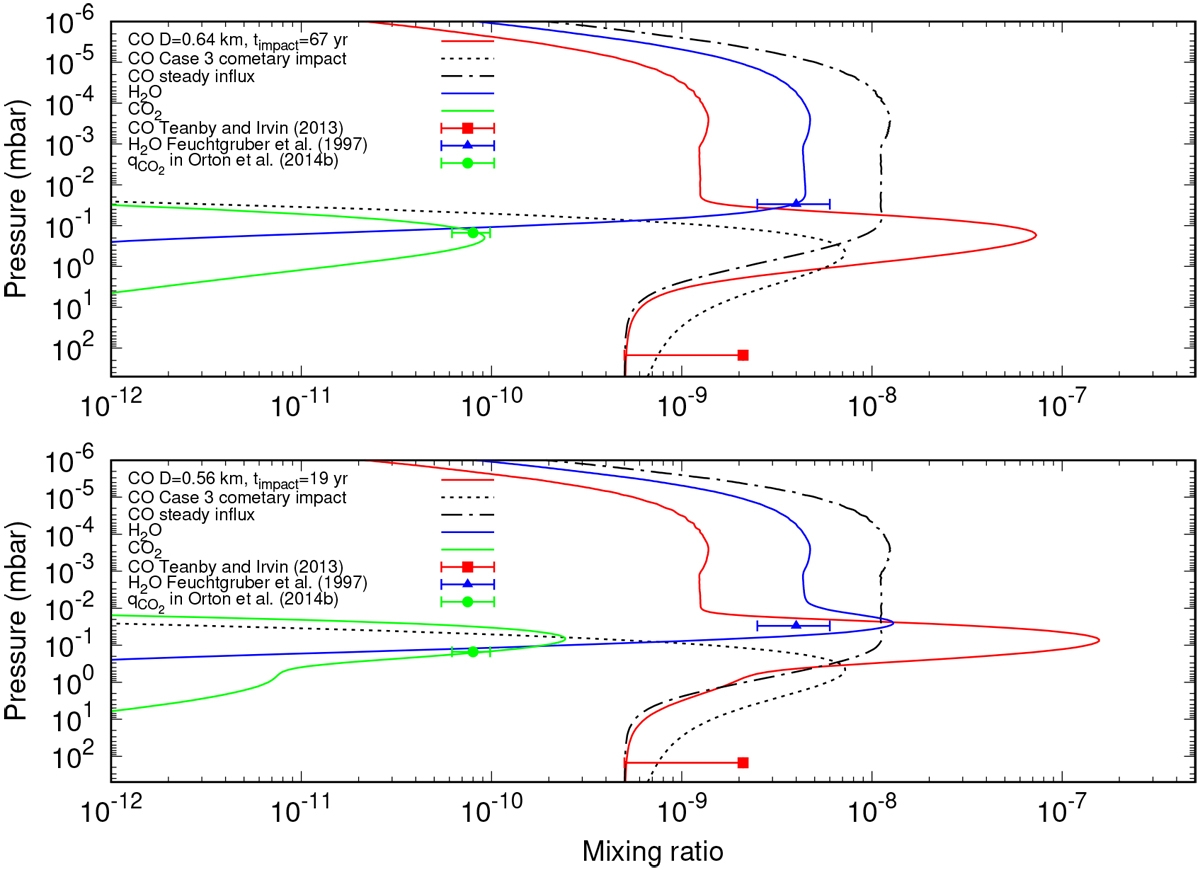Fig. 10

Mixing ratio profiles of the most abundant oxygen species in the Uranus atmosphere assuming an oxygen combined source due to ice grain ablation and cometary impact. Upper panel: mixing ratio profiles resulting from assuming H2 O and CO influx of 6.0 × 104 and 2.9 × 104 cm−2 s−1, respectively. Additionally, an impactor of 0.64 km in diameter hits the planet delivering only CO (see Table 4). Carbon dioxide is produced by chemical reactions. The evolution time of the material delivered by the comet is tuned to produce a CO2 abundance compatible with Spitzer observations resulting into timpact = 67 yr. On the other hand, CO largely overestimates the data. Lower panel: as above, but the size of the impactor is reduced to 0.56 km to inject a smaller amount of CO in the atmosphere. The evolution time needed to match the CO2 observationsis 19 yr giving rise to a CO mixing ratio ~5 × 10−9 at 0.4 mbar, whereas H2O largely overestimates ISO data.
Current usage metrics show cumulative count of Article Views (full-text article views including HTML views, PDF and ePub downloads, according to the available data) and Abstracts Views on Vision4Press platform.
Data correspond to usage on the plateform after 2015. The current usage metrics is available 48-96 hours after online publication and is updated daily on week days.
Initial download of the metrics may take a while.


